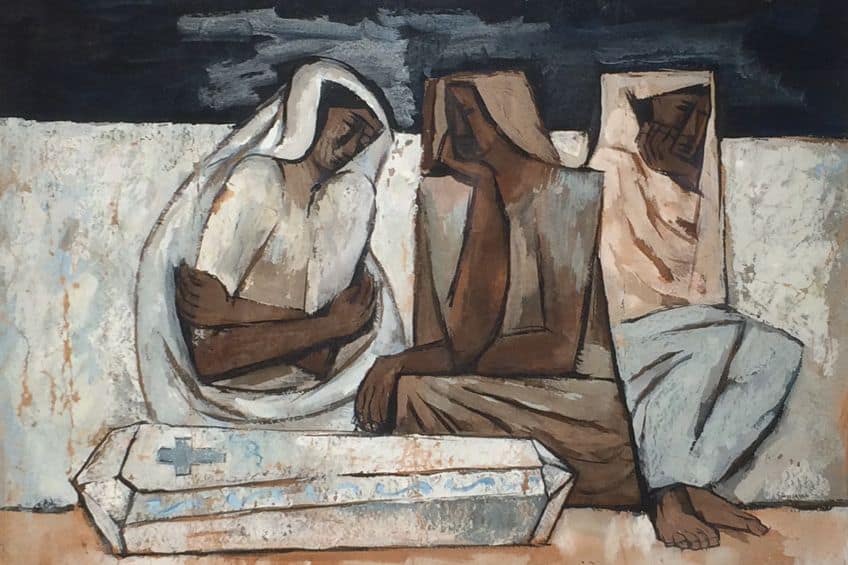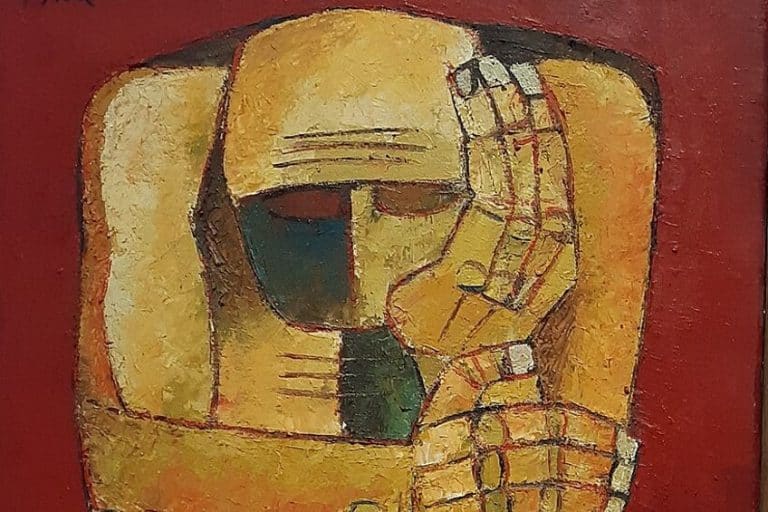Oswaldo Guayasamín – Social Injustice Portrayed Through Art
Oswaldo Guayasamín, a towering figure in Latin American art, is renowned for his powerful and emotive paintings that reflect the human condition with raw intensity. Born in Ecuador in 1919, Guayasamín’s work is deeply rooted in social and political themes, depicting the struggles and aspirations of the marginalized and oppressed. His distinctive style combines elements of expressionism and indigenous art, creating a unique visual language that speaks to the universal struggles of humanity. Throughout his prolific career, Guayasamín’s art has garnered international acclaim, making him one of the most significant artists of the 20th century in Latin America.
Table of Contents
Key Takeaways
- Oswaldo Guayasamín was a renowned Ecuadorian painter whose art addressed themes of suffering and social injustice.
- He honed a distinctive style blending Expressionism and Cubism, which he used to portray the range of human emotions.
- Guayasamín’s contributions to cultural and humanitarian discourse are honored through memorials and his Chapel of Man in Quito.
Early Life and Education
| Birth | July 6, 1919 |
| Death | March 10, 1999 |
| Place of Birth | Quito, Ecuador |
| Genre of Work | Shaking movement |
| Notable Artworks |
|
Oswaldo Guayasamín was an Ecuadorian painter and sculptor whose powerful works reflect profound social messages and a dedication to human rights. Born on July 6, 1919, in Quito, Ecuador, Guayasamín’s art was greatly influenced by his mixed indigenous and mestizo heritage, as well as the political unrest and social struggles present throughout Latin America during his lifetime. His vivid visuals chronicled the experiences of suffering and injustice endured by many, especially the indigenous communities, making him one of the most significant artists to emerge from the region in the 20th century.

He pursued formal training in art at the School of Fine Arts in Quito, where he developed a style that syncretized elements of Expressionism and Cubism. This unique approach served as a visual language through which he channeled his activism, particularly in his renowned series such as Huacayñán, The Age of Anger, and The Age of Tenderness. These series allowed him to depict the breadth of human emotions, from despair to hope, using his canvases to capture the spectrum of the human condition. Throughout his career, Guayasamín’s works received international attention, and his influence extended far beyond the borders of Ecuador. Guayasamín’s legacy continues through his creations and numerous memorials, including the Chapel of Man in Quito, designed to celebrate Latin American culture while preserving his art for future generations to experience.
As an artist, he did not shy away from using his platform to address pressing societal issues, and his works continue to inspire dialogue around themes of culture, identity, and the pursuit of equality.
Artistic Beginnings
Guayasamín’s passion for art became evident at a young age. Enrolling at the National School of Fine Arts in Quito in 1932, he honed his skills, graduating with top honors in 1941. The early recognition of his talent was marked by his first solo exhibitions, which he held in Quito and Guayaquil shortly after his graduation from the School of Fine Arts.

Influence of Indigenous Culture
The Kichwa heritage from his father greatly influenced Guayasamín’s perspective and artwork. His exposure to the indigenous culture and its struggles in Ecuador deeply informed his visual language.
He channeled the experiences of his upbringing in a financially constrained family, and the intricate history of Ecuador into a vivid and emotional portrayal of human and social themes which resonated with the broader Latin American identity.
Artistic Career
Oswaldo Guayasamín’s artistic career was marked not only by the creation of powerful murals and paintings that addressed social inequalities in Latin America, but also by meaningful collaborations and international exhibitions that amplified his influence as a Latin American artist.

Murals and Major Works
Guayasamín’s contribution to art is significant through his murals and major works, which often reflected the human suffering and social injustices he witnessed. His magnum opus, La Capilla del Hombre (The Chapel of Man), stands as a monumental complex in Quito dedicated to the suffering and struggles of indigenous Latin Americans.
Fundación Guayasamín, which houses much of his work, including pieces from his series La Edad de la Ira (The Age of Wrath), serves to preserve and promote his legacy.
International Exhibitions
Throughout his career, Oswaldo Guayasamín was featured in numerous international exhibitions. His artworks were showcased at the Hispano-American Biennial of Art and the Fourth Biennial of São Paulo, among others. These exhibitions helped to establish his reputation as a prominent painter who cast light on marginalized communities in Latin America.

Collaborations and Contemporaries
Guayasamín formed connections with several key figures in art and politics. He maintained friendships with fellow Ecuadorian painter Eduardo Kingman, and with Mexican muralists José Clemente Orozco and Diego Rivera. Guayasamín also developed a close friendship with Chilean poet Pablo Neruda, who was a significant influence on his work.
His political connections included leaders such as Fidel Castro and human rights advocates like Rigoberta Menchú.
Addressing Indigenous Issues Through Art
Guayasamín dedicated much of his work to the representation and advocacy of indigenous peoples. His emotive paintings and sculptures often depicted the hardships and resilience of indigenous communities. He focused not just on the plight but also on the dignity of these communities, using his art as a form of protest against their historical oppression in Latin America.
Themes and Styles
Oswaldo Guayasamin’s oeuvre is hallmarked by its emotive intensity and a style that infuses cubist elements with expressionist fervor, reflecting upon profound themes such as suffering and the human condition.

Representation of Suffering
Guayasamin dedicated much of his artistic energy to portraying suffering and oppression, particularly among indigenous people and those impacted by political tumult. His works serve as a social commentary on the pain inflicted by dictatorships and social injustice in Latin America, including countries like Chile and Mexico.
The powerful imagery of dead children and anguished figures signifies the universal pain of loss and grief.
Cubist Influence
Guayasamin’s style is heavily influenced by Cubist principles, which manifest in the fragmented and abstract forms in his artworks. Though he utilizes cubist techniques, his approach is distinctly personal and expressive, diverging from the traditional cubist style to imbue his portraits with emotional depth and political undertones. This style allowed Guayasamin to capture the raw emotion of his subjects, enhancing the thematic portrayal of suffering and human despair.
Legacy and Memorials
Oswaldo Guayasamín left a profound mark on the cultural landscape with his art, which continues to be celebrated and preserved in various forms and institutions across the world.

Cultural Impact
Oswaldo Guayasamín’s work poignantly captured the struggles and emotions of the marginalized, reflecting his Mestizo heritage. Renowned globally, he has been commemorated at the UNESCO Headquarters with murals that emphasize his commitment to human rights and cultural diversity.
Guayasamín’s emphasis on social and political themes secured him a revered place within the pantheon of impactful Latin American artists.
Museums and Institutions
- Capilla del Hombre (Chapel of Man): Dedicated to the peoples of Latin America, this cultural space in Quito serves as a museum and a memorial to Guayasamín’s work. It houses many of his pieces and stands as a testament to his artistic legacy.
- La Galería Caspicara: Located in Quito, it is another institution that highlights Guayasamín’s contributions to the arts.
- International exhibitions: His works have been showcased in prominent venues such as the Luxembourg Palace and Palais de Glace, making his art accessible to a global audience.
Influence of Oswaldo Guayasamín Today
Guayasamín’s influence extends to contemporary artists who are inspired by his unique style and powerful themes. His legacy continues to be a reference point for discussions around indigenous rights and the representation of cultural identity in art. As a result, his impact resonates in the world of art and beyond, fostering a continued dialogue on the issues he depicted.

Guayasamín’s legacy as an artist is one of profound impact and enduring relevance. His passionate dedication to portraying the human experience, especially the struggles faced by marginalized communities, transcends borders and resonates with audiences worldwide. Through his powerful paintings, Guayasamín not only captured the social and political realities of his time but also sparked conversations about justice, inequality, and the resilience of the human spirit. As we reflect on his life and work, Guayasamín’s artistic vision serves as a timeless reminder of art’s potential to inspire empathy, provoke thought, and advocate for positive change in society.
Frequently Asked Questions
What Are the Most Significant Accomplishments of Oswaldo Guayasamín?
Guayasamín won several prestigious awards, including the first prize at the Ecuadorian Salón Nacional de Acuarelistas y Dibujantes in 1948 and at the Third Hispano-American Biennial of Art in Barcelona in 1955. He was also named the best South American painter in 1957 at the Fourth Biennial of São Paulo.
How Did Oswaldo Guayasamín’s Style Evolve Throughout His Career?
His style transitioned from a focus on the indigenous themes of suffering and oppression to an expressionist mode that captured existentialist subjects, such as human tragedy.
What Impact Did Oswaldo Guayasamín Have on Ecuadorian Art?
Guayasamín is hailed as one of the most iconic Ecuadorian artists of the twentieth century. His work profoundly influenced the direction of Ecuadorian art, illuminating social and political issues through his expressionist and often controversial murals.
Isabella studied at the University of Cape Town in South Africa and graduated with a Bachelor of Arts majoring in English Literature & Language and Psychology. Throughout her undergraduate years, she took Art History as an additional subject and absolutely loved it. Building on from her art history knowledge that began in high school, art has always been a particular area of fascination for her. From learning about artworks previously unknown to her, or sharpening her existing understanding of specific works, the ability to continue learning within this interesting sphere excites her greatly.
Her focal points of interest in art history encompass profiling specific artists and art movements, as it is these areas where she is able to really dig deep into the rich narrative of the art world. Additionally, she particularly enjoys exploring the different artistic styles of the 20th century, as well as the important impact that female artists have had on the development of art history.
Learn more about Isabella Meyer and the Art in Context Team.
Cite this Article
Isabella, Meyer, “Oswaldo Guayasamín – Social Injustice Portrayed Through Art.” Art in Context. March 26, 2024. URL: https://artincontext.org/oswaldo-guayasamin/











